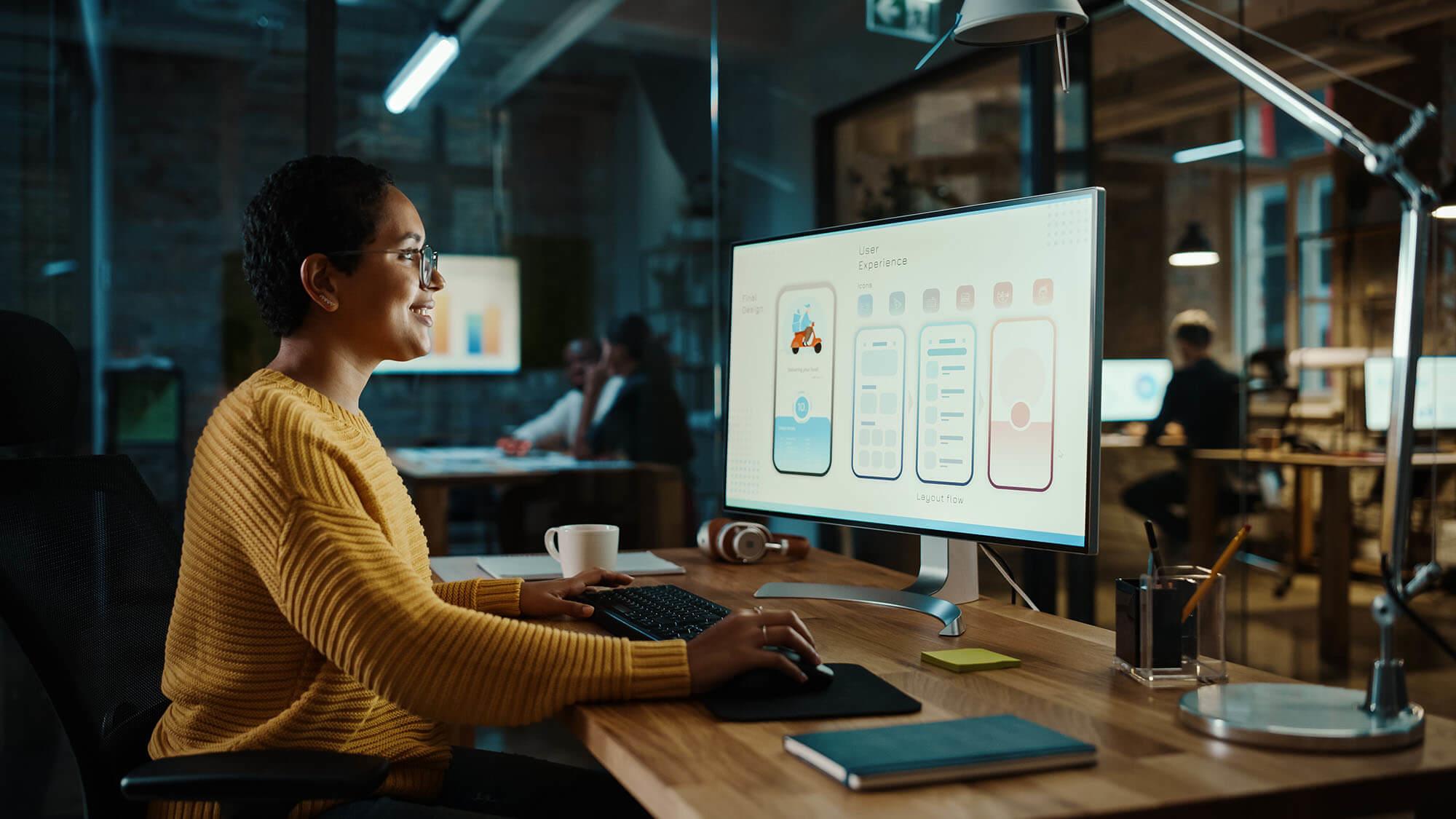Exploring the Impact of Individual Experience on Successful Web Design
Exploring the Impact of Individual Experience on Successful Web Design
Blog Article
Trick Considerations to Keep in Mind When Establishing a Modern Internet Layout That Lines Up With Current Trends
In the ever-evolving landscape of internet design, it is essential to take into consideration numerous critical variables that not only mirror current patterns yet likewise boost customer engagement. A receptive design is extremely important, ensuring that users experience seamless performance across different devices. Focusing on individual experience with instinctive navigating and visual appeal can not be ignored.
Responsive Design Principles
In the ever-evolving landscape of website design, the application of receptive layout principles stands as an essential need for producing easy to use internet sites. Responsive style makes certain that website make well on a range of tools, from desktops to mobile phones and tablets. This adaptability is attained via liquid grids, versatile pictures, and media queries, which jointly allow a solitary website to provide an optimal viewing experience across varied platforms.
The core of receptive design hinges on its capability to adjust layout and content based upon the individual's screen size and orientation. By utilizing family member units like percentages as opposed to fixed units like pixels, developers can develop scalable designs that keep visual honesty. In addition, employing media queries permits the application of different styles depending upon the characteristics of the gadget, promoting customized experiences that improve usability.
Furthermore, receptive design is not just a technical consideration; it is critical in accommodating the boosting use smart phones for internet surfing. As customer assumptions evolve, making sure access and performance across all systems ends up being crucial for preserving involvement and contentment. Thus, accepting responsive style principles is essential for contemporary internet growth, cultivating inclusivity and future-proofing digital material.
Emphasis on User Experience
User experience (UX) has arised as a central emphasis in contemporary web style, enhancing the principles of receptive style by prioritizing how users communicate with internet sites. A well-designed UX can significantly affect individual fulfillment, retention, and engagement, underscoring the requirement for developers to produce intuitive and delightful experiences.
Trick components of reliable UX layout consist of use, functionality, and looks. Internet sites need to be very easy to navigate, making sure individuals can find the details they seek without confusion. Concise and clear navigating food selections, consistent format, and logical content company are vital in achieving this goal. Furthermore, performance plays a vital function; interactive components must work effortlessly across all web browsers and gadgets.

In addition, incorporating individual responses into the layout process is essential - web design. Performing use testing and celebration understandings from actual customers can provide important details to fine-tune the style and address discomfort factors. Inevitably, a solid focus on user experience will help create sites that reverberate with site visitors, cultivating commitment visite site and driving conversions
Importance of Availability
Availability is an essential element of contemporary website design, making sure that all users, despite their abilities or disabilities, can engage and navigate with digital material properly. As the net comes to be significantly indispensable to every day life, it is vital that sites are inclusive, accommodating a varied audience that includes individuals with visual, acoustic, cognitive, and electric motor impairments.
Implementing accessibility features not only follows legal needs, such as the Americans with Disabilities Act (ADA) and the Internet Web Content Accessibility Standards (WCAG), however also boosts individual experience for everybody. Accessible designs frequently bring about far better navigation, faster packing times, and improved search engine optimization, profiting all users.
Additionally, promoting a comprehensive digital setting mirrors favorably on a brand name's track record. Firms that focus on availability show social responsibility and a dedication to equity, which can enhance client commitment and widen their market reach.

Existing Aesthetic Trends
Embracing current visual patterns is important for creating visually attractive and engaging web sites that capture user interest. In today's digital landscape, minimalism remains to control, stressing tidy lines, sufficient white space, and simple navigating. This strategy not just boosts readability yet additionally permits crucial content to beam, lining up with user assumptions for simpleness and clearness.
In addition, using vibrant typography is progressively prominent, offering a distinct voice and improving brand identification. Large, attention-grabbing typefaces can create aesthetic pecking order, leading customers through the material effectively. Furthermore, vivid color combinations are recovering, enabling developers to stimulate emotions and develop memorable experiences.
Another pattern is the unification of natural shapes and asymmetrical formats, which can include an element of surprise and imagination, establishing a Our site website besides more conventional styles. Moreover, the assimilation of immersive visuals, such as top notch photos and videos, can engage users and communicate messages much more strongly. web design.
As these visual patterns progress, it is necessary for web designers to stay notified and adapt their techniques, ensuring their creations continue to be pertinent and reverberate with modern target markets.
Enhancing for Efficiency
While visual considerations play a considerable function in drawing in customers, optimizing for efficiency is similarly vital to make certain a smooth surfing experience. A well-designed website needs to fill swiftly and react quickly to user interactions, as hold-ups can cause aggravation and enhanced bounce rates.
To attain ideal performance, designers should prioritize decreasing documents sizes by pressing photos and making use of effective coding practices (web design). Applying lazy loading techniques can additionally boost speed by postponing the loading of non-essential resources until they are required. Additionally, leveraging Content Distribution Networks (CDNs) can distribute fixed possessions more detailed to individuals, minimizing latency
Furthermore, it is essential to make use of modern internet innovations such as HTML5 and CSS3, which not just improve performance however also boost compatibility throughout different gadgets and internet browsers. Regularly keeping an eye on site rate using devices like Google PageSpeed Insights can provide useful understandings into locations for improvement.

Final Thought
In final thought, contemporary web style requires a multifaceted method that incorporates responsive style concepts, a focus on user experience, and strict adherence to access standards. Jointly, these considerations add to the production of a natural and impactful on the internet existence that fulfills the varied demands of contemporary customers.
In the ever-evolving landscape of web design, it is necessary to think about several essential elements that not only reflect current trends but likewise boost customer interaction. A responsive style is critical, ensuring that have a peek at these guys individuals experience seamless capability across various gadgets.The core of receptive style lies in its ability to readjust format and content based on the user's screen size and alignment.Furthermore, including user feedback into the style process is vital.In final thought, modern web style necessitates a complex approach that includes receptive design concepts, an emphasis on customer experience, and rigorous adherence to access requirements.
Report this page